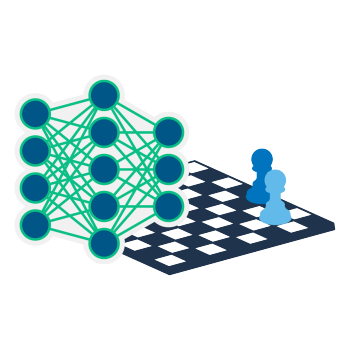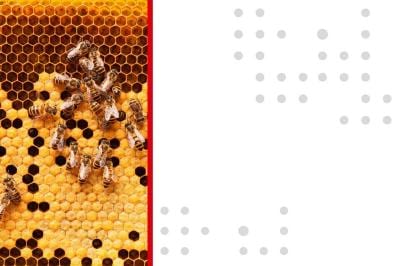ANALYTICS INSIGHTS
Transform data into the best decisions
Recent Analytics Insights
-
 Qu'est-ce que les données synthétiques ? Et comment pouvez-vous les utiliser pour stimuler des avancées en IA ?Les données ne manquent pas dans le monde d'aujourd'hui, mais il peut être difficile, lent et coûteux d'accéder à des données de haute qualité suffisantes pour entraîner des modèles d'IA. Découvrez pourquoi les données synthétiques sont si essentielles pour les initiatives d'IA gourmandes en données, comment les entreprises peuvent les utiliser pour débloquer la croissance et comment elles peuvent aider à relever les défis éthiques.
Qu'est-ce que les données synthétiques ? Et comment pouvez-vous les utiliser pour stimuler des avancées en IA ?Les données ne manquent pas dans le monde d'aujourd'hui, mais il peut être difficile, lent et coûteux d'accéder à des données de haute qualité suffisantes pour entraîner des modèles d'IA. Découvrez pourquoi les données synthétiques sont si essentielles pour les initiatives d'IA gourmandes en données, comment les entreprises peuvent les utiliser pour débloquer la croissance et comment elles peuvent aider à relever les défis éthiques.
-
 Fraud detection and machine learning: What you need to knowMachine learning and fraud analytics are critical components of a fraud detection toolkit. Discover what you’ll need to get started defending against fraud – from integrating supervised and unsupervised machine learning in operations to maintaining customer service.
Fraud detection and machine learning: What you need to knowMachine learning and fraud analytics are critical components of a fraud detection toolkit. Discover what you’ll need to get started defending against fraud – from integrating supervised and unsupervised machine learning in operations to maintaining customer service.
-
 What are AI hallucinations?Separating fact from AI-generated fiction can be hard. Learn how large language models can fail and lead to AI hallucinations – and discover how to use GenAI responsibly.
What are AI hallucinations?Separating fact from AI-generated fiction can be hard. Learn how large language models can fail and lead to AI hallucinations – and discover how to use GenAI responsibly.
-
 Qu'est-ce qu'un chatbot ?Un chatbot est une forme d'IA conversationnelle conçue pour simplifier l'interaction entre l'homme et l'ordinateur. Découvrez comment les chatbots sont utilisés dans les entreprises et comment ils peuvent être intégrés dans les applications analytiques.
Qu'est-ce qu'un chatbot ?Un chatbot est une forme d'IA conversationnelle conçue pour simplifier l'interaction entre l'homme et l'ordinateur. Découvrez comment les chatbots sont utilisés dans les entreprises et comment ils peuvent être intégrés dans les applications analytiques.
-
 4 strategies that will change your approach to fraud detectionAs fraudulent activity grows and fighting fraud becomes more costly, financial institutions are turning to anti-fraud technology to build better arsenals for fraud detection. Discover four ways to improve your organization's risk posture.
4 strategies that will change your approach to fraud detectionAs fraudulent activity grows and fighting fraud becomes more costly, financial institutions are turning to anti-fraud technology to build better arsenals for fraud detection. Discover four ways to improve your organization's risk posture.
-
 Analytics leads to lifesaving cancer therapiesA long-shot treatment offers hope to 10-year-old Harrison after he learns the DNA profile of his cancer is resistant to chemo. Find out how data and analytics play a role in cancer research and cancer treatments that are saving lives.
Analytics leads to lifesaving cancer therapiesA long-shot treatment offers hope to 10-year-old Harrison after he learns the DNA profile of his cancer is resistant to chemo. Find out how data and analytics play a role in cancer research and cancer treatments that are saving lives.
-
 Key questions to kick off your data analytics projectsThere’s no single blueprint for starting a data analytics project. Technology expert Phil Simon suggests these 10 questions as a guide.
Key questions to kick off your data analytics projectsThere’s no single blueprint for starting a data analytics project. Technology expert Phil Simon suggests these 10 questions as a guide.
-
 Analytics tackles the scourge of human traffickingVictims of human trafficking are all around us. From forced labor to sex work, modern-day slavery thrives in the shadows. Learn why organizations are turning to AI and big data analytics to unveil these crimes and change future trajectories.
Analytics tackles the scourge of human traffickingVictims of human trafficking are all around us. From forced labor to sex work, modern-day slavery thrives in the shadows. Learn why organizations are turning to AI and big data analytics to unveil these crimes and change future trajectories.
-
Analytics: A must-have tool for leading the fight on prescription and illicit drug addictionStates and MFCUs now have the analytics tools they need to change the trajectory of the opioid crisis by analyzing data and predicting trouble spots – whether in patients, prescribers, distributors or manufacturers. The OIG Toolkit with free SAS® programming code makes that possible.
-
Viking transforms its analytics strategy using SAS® Viya® on AzureViking is going all-in on cloud-based analytics to stay competitive and meet customer needs. The retailer's digital transformation are designed to optimize processes and boost customer loyalty and revenue across channels.
-
Detect and prevent banking application fraudCredit fraud often starts with a falsified application. That’s why it’s important to use analytics starting at the entrance point. Learn how analytics and machine learning can detect fraud at the point of application by recognizing the biggest challenge – synthetic identities.
-
Public health infrastructure desperately needs modernizationPublic health agencies must flex to longitudinal health crises and acute emergencies – from natural disasters like hurricanes to events like a pandemic. To be prepared, public health infrastructure must be modernized to support connectivity, real-time data exchanges, analytics and visualization.
-
SAS CIO: Why leaders must cultivate curiosity in 2021With the change we’re all facing this year, CIOs should be counting on curiosity to play a crucial role in how we’re going to meet the challenges that lie ahead. From the moment COVID-19 hit, our IT organization has relied on curiosity – that strong desire to explore, learn, know - to fuel the urgent changes required. And it’s curiosity that will enable us to meet the needs of the future of work post-pandemic.
-
Load Forecasting: Ensuring supply meets energy demandLoad forecasting helps energy suppliers meet demand for residential and commercial customers. As renewable energy resources increase, the necessity for a technology platform that adapts to load forecasting requirements becomes crucial.
-
Five ways your organization can enhance resilience for years to comeInnovation, agility and customer-centricity frequently top the list of companies’ strategic objectives, and now the most urgent priority is resilience. Given this new urgency, it’s worth taking a close look at the underpinnings of resilience and how they could be applied in any industry. This article explores how analytics can help boost resilience and includes key elements to keep your organization resilient.
-
Resilience in the face of unpredictabilityUnpredictability can “shatter and reshape” a society. And in these unpredictable times, it is important to remain resilient and be prepared to bounce back. This article explores what it truly means to be resilient, how to build it, and how analytics can help you act when your resilience is tested.
-
Homelessness data holds insights to a hidden problemSAS partnered with The Carying Place, an organization that supports working homeless families, to find new ways to measure indicators of participant success and provide families the help they deserve.
-
Finding COVID-19 answers with data and analyticsLearn how data plays a role in optimizing hospital resources, understanding disease spread, supply chain forecasting and scientific discoveries.
-
How health care leaders deployed analytics when crisis hitDuring the COVID-19 pandemic, some health care providers were well-positioned to respond to rapid changes in demand. The factor that most distinguished them was that they already had a strong capacity in place for using data to inform decisions. Read about three key takeaways from their experiences.
-
Situational awareness guides our responses – routine to crisisMany circumstances call for situational awareness – that is, being mindful of what’s present and happening around you. The COVID-19 pandemic heightened this need, as leaders across industries used analytics and visualization to gain real-time situational awareness and respond with fast, critical decisions.
Send SAS Insights straight to your inbox




